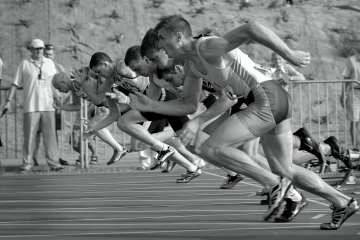Innovative cooling clothing helps athletes defy hot weather in Tokyo

Innovative cooling clothing, which cools athletes' bodies during sports, should help Belgian Olympians defy the heat in Tokyo, Japan.
Innovative cooling clothing, which cools athletes' bodies during sports, should help Belgian Olympians defy the heat in Tokyo, Japan.
Innovative cooling clothing, which cools athletes' bodies during sports, should help Belgian Olympians defy the heat in Tokyo, Japan. The cooling clothing was presented by Flemish Minister of Innovation Hilde Crevits (CD&V) and Flemish Minister of Sport Ben Weyts (N-VA) at the indoor athletics hall in Leuven. At the time of the Games in Tokyo this summer, temperatures of over 30 degrees and humidity levels above 70 percent are expected, and so the clothing is welcome.
"The development of cooling clothing for our Olympians, with the support and guidance of PIO (Program Innovative Public Procurement, ed.), is a shining example of innovation," says Crevits. "During the Olympics, every hundredth of a second, every centimeter, every point can make the difference between winning and losing. In the humid heat of Tokyo every detail counts, including the clothing. With the innovative cooling clothing, we are first forcing a breakthrough in Flemish top-class sport, which will then also be useful outside the sport. Interested sports federations will be able to buy the clothing, but the technology can potentially also be used in other technical clothing, for example in the medical sector."
The human body produces heat when exercising. In normal circumstances, sweating is then the solution to release the internal heat. That works well if the difference with the outside temperature is large enough, but that is not the case in Tokyo. The body will heat up quickly, and in some cases even make a fever.
Ice vests have been used in the past, but they offer little relief in a humid climate like Tokyo's. Therefore, the top athletes in Tokyo will work with PCM pack-based ice vests, with intercooler tops, cooling spray, and cooling towels to use before and between races. At the start of the race, cyclists and triathletes will appear with graphene clothing, a technology that quickly distributes heat throughout the body. Other athletes will wear clothing with a coating that has the same effect.
Individual heat strategies have also been drawn up for the top athletes: not only the use of the cooling clothing, but also sweat production, the amount athletes need to drink and the optimal composition of drinks have been mapped out. These tests were carried out together with UGent and KU Leuven.
Latest insights & stories

A Global Movement: The World Unites in a Pink Pledge for Clean and Sustainable Water
5,000 participants. 32 countries. €30,000 funds raised. And that's just the beginning.
Picture this: One step that sends ripples across the globe, transforming lives and creating waves of change. You might wonder, how can such a simple action for most of us have such a profound impact?

Sustainability and circularity in construction
Join us in transforming the future of construction, creating buildings that not only stand the test of time but also contribute to a healthier planet!

RainTunes: Shower scenarios for the soul
Light, hearing, smell, and touch: Together with experts, we have developed sensuous scenarios that turn showering into an individual experience. Whether you want to prepare for the day ahead or relax after working out. Whether you want to refresh after a day’s work or unwind at the end of the evening: RainTunes surprises with multisensory experiences.*
*Currently available only in Germany and Austria.